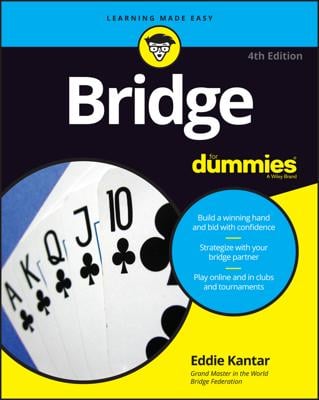Opening the bidding
The player who deals the cards has the first opportunity to either make a bid or pass. The dealer looks at her hand; if she has sufficient strength, she makes a bid that begins to describe the strength and distribution (how the cards are divided). If she doesn’t have enough strength to make the first bid, called the opening bid, she can pass (not make a bid).Being second in line for bidding
After the dealer bids or passes, the bidding continues in a clockwise rotation. The next player can take one of two actions:-
Make a bid higher than the dealer’s bid (assuming that the dealer makes an opening bid)
-
Pass
Responding to the opening bid
After the second player makes a bid or passes, the bidding follows a clockwise rotation to the next player at the table, the dealer’s partner. If the dealer opens the bidding, her partner is called the responder.If the dealer opens the bidding, the responder has a chance to make a bid, called a response. This bid begins to describe the strength and distribution of the responding hand. The partnership is looking for some suit in which they have eight or more cards together, called an eight-card fit. It may take a few bids to uncover an eight-card fit. Sometimes it doesn’t exist. Very sad. The responder also has the option to pass her partner’s opening bid, which communicates more information (albeit of a rather depressing nature) about the strength of her hand.
Buying the contract in bridge bidding
The bidding continues clockwise around the table, with each player either making a bid higher than the last bid or passing. After three passes, the bidding ends. The partnership that makes the last bid has bought the contract and plays the hand, trying to take at least the number of tricks that corresponds to the final bid.During the bidding, think of yourself as being in an up-only elevator that doesn’t stop until three of its passengers say “Stop!” (or, in this case, “Pass”) consecutively. Furthermore, this elevator has no down button! The only way you can refrain from driving the elevator up is by saying “Pass” when it’s your turn to bid.
Passing the buck rather than bidding
A special case comes up once in a while. Sometimes no one wants to make a bid, as you can see in the bidding sequence in this table.| West | North (Your Partner) | East | South (You) |
|---|---|---|---|
| Pass | Pass | Pass | Pass |

